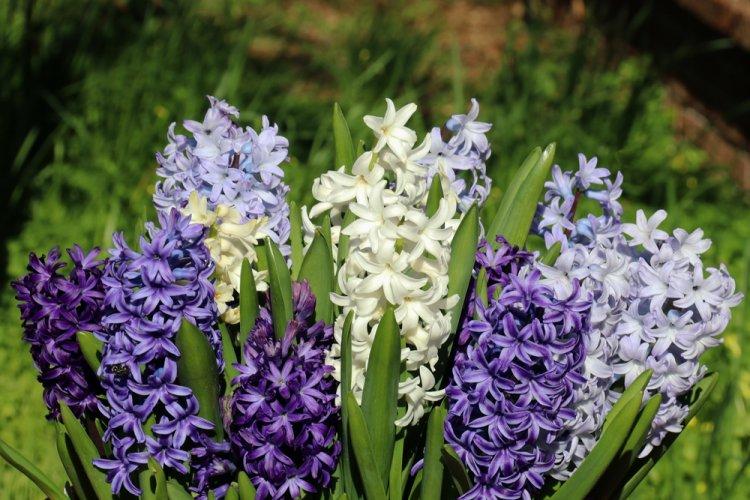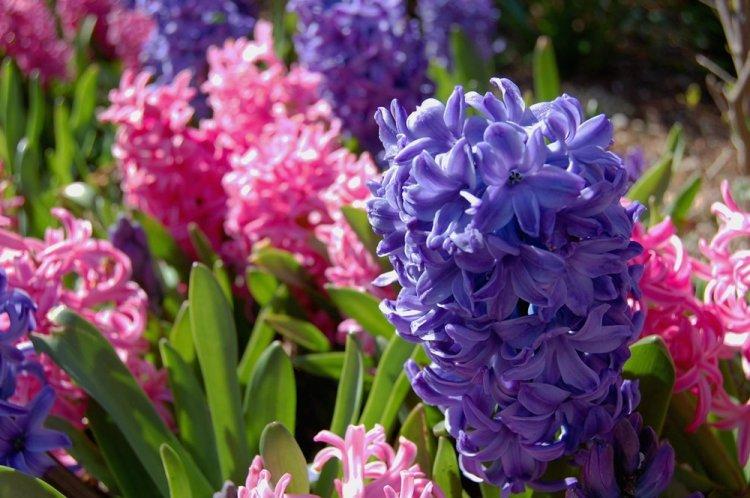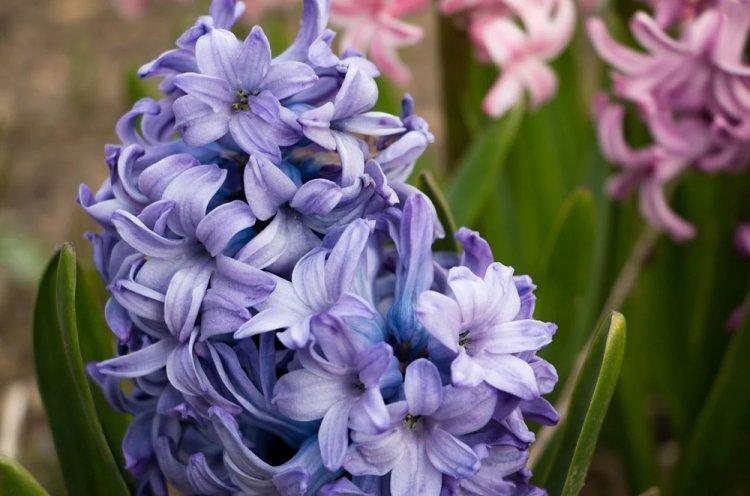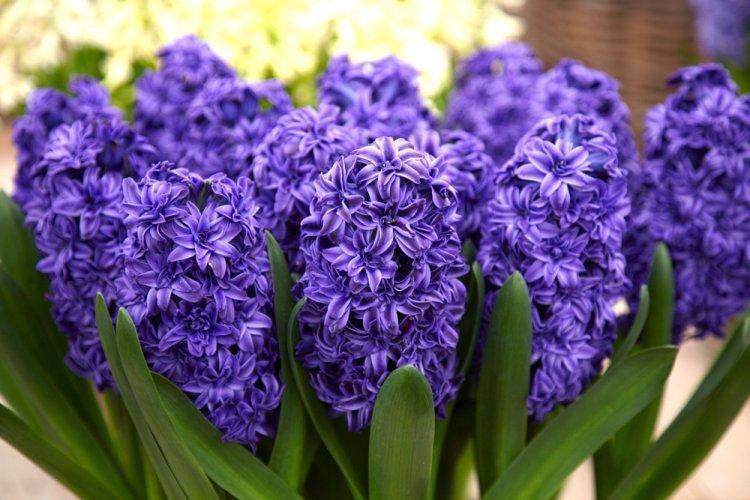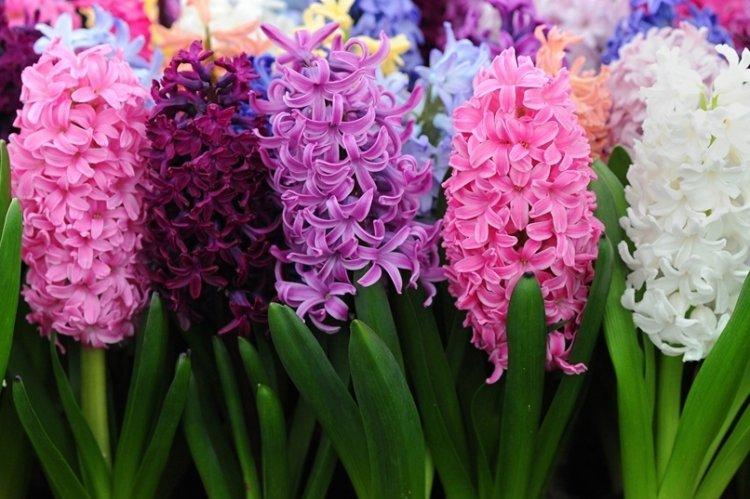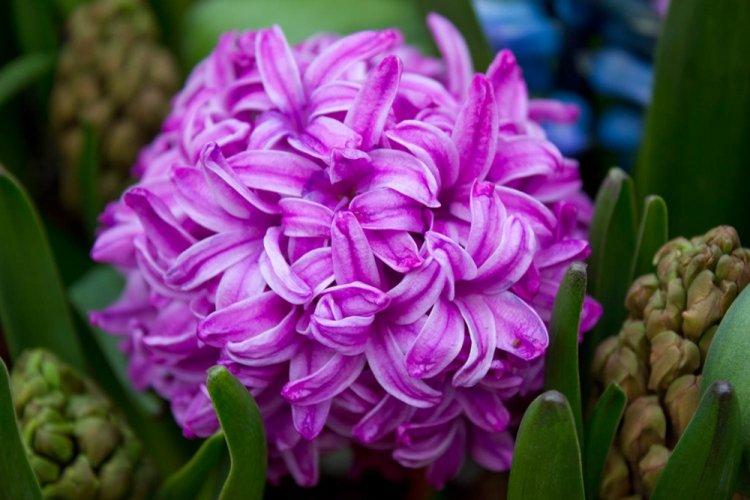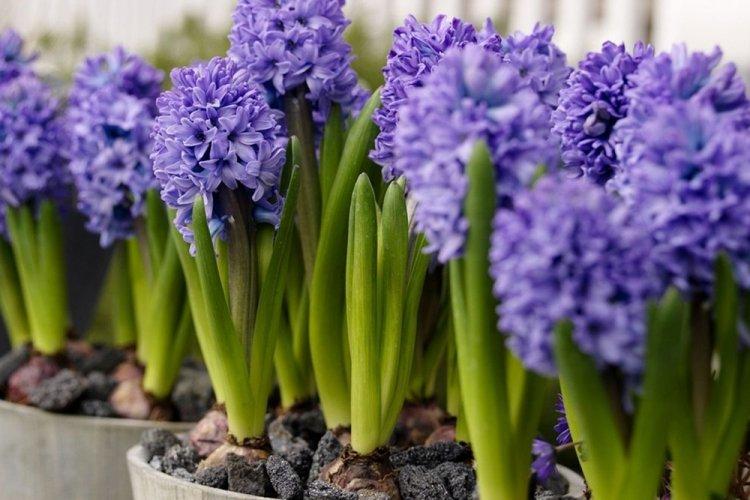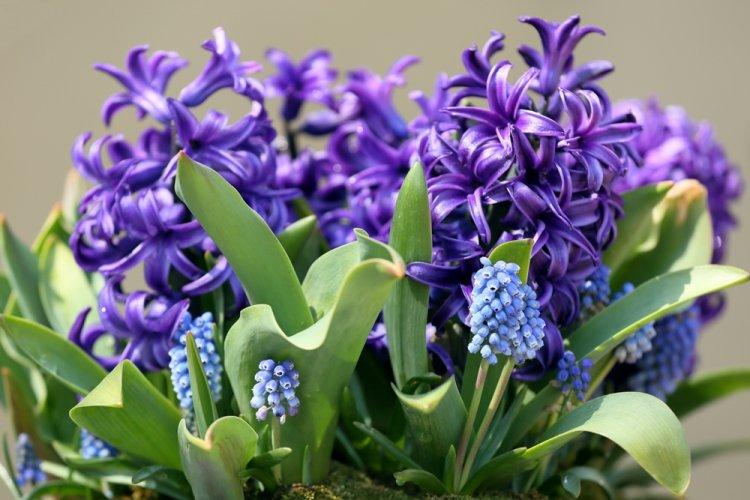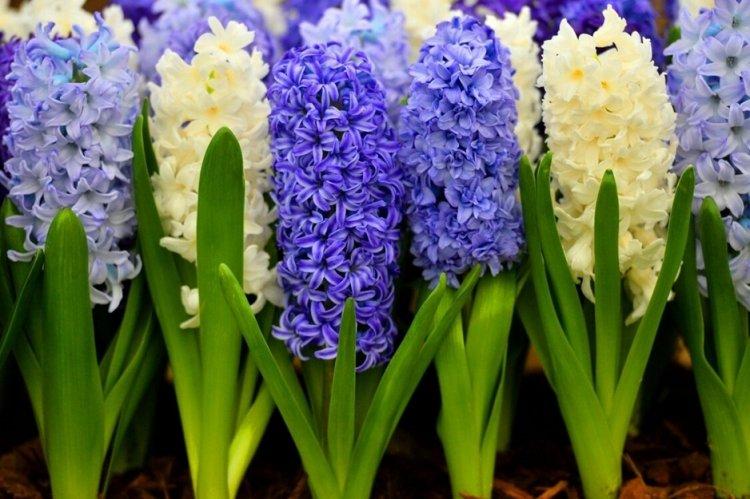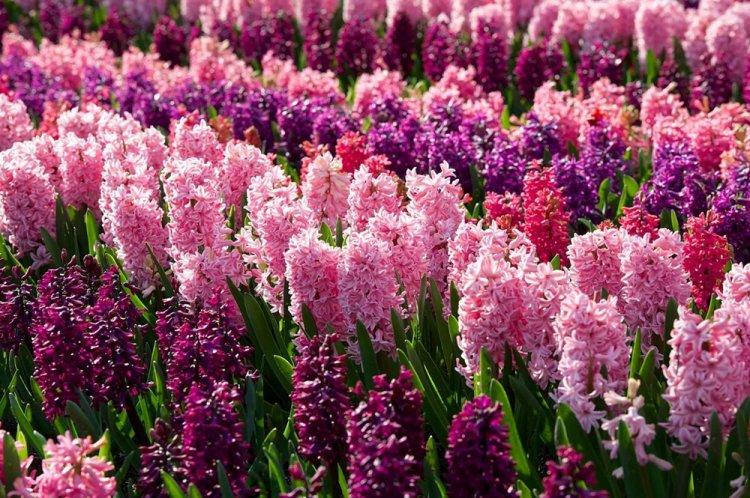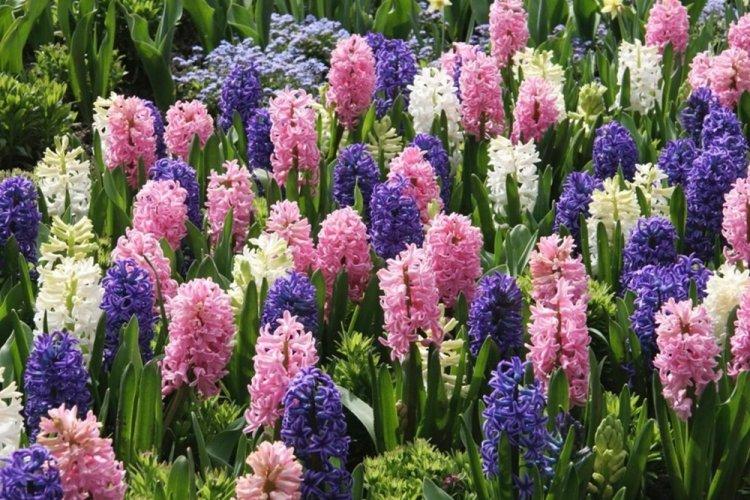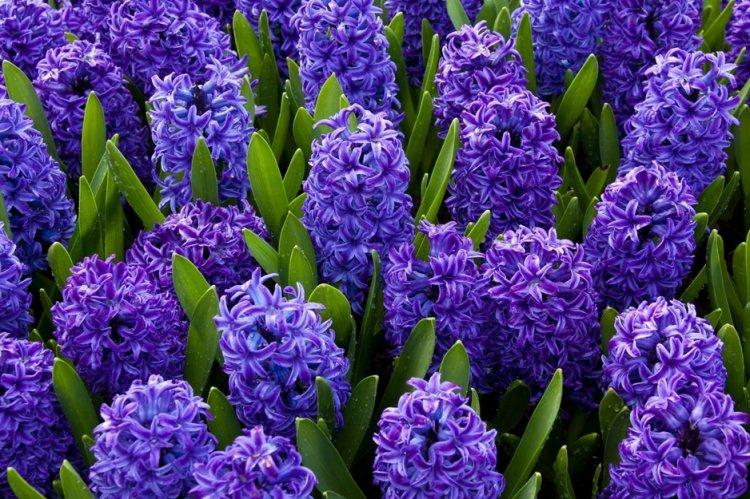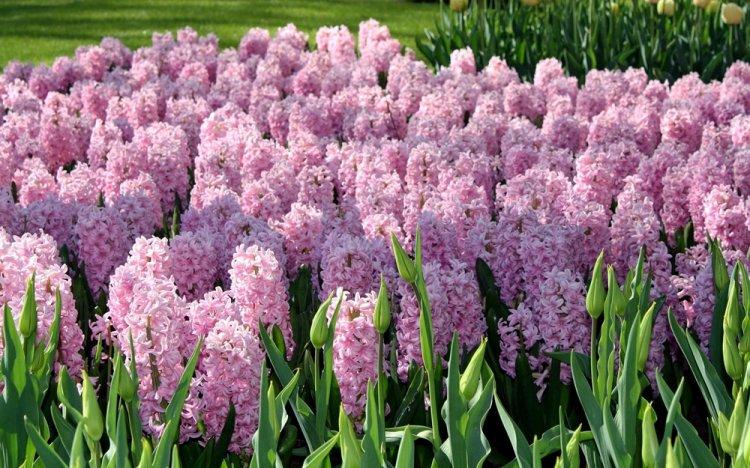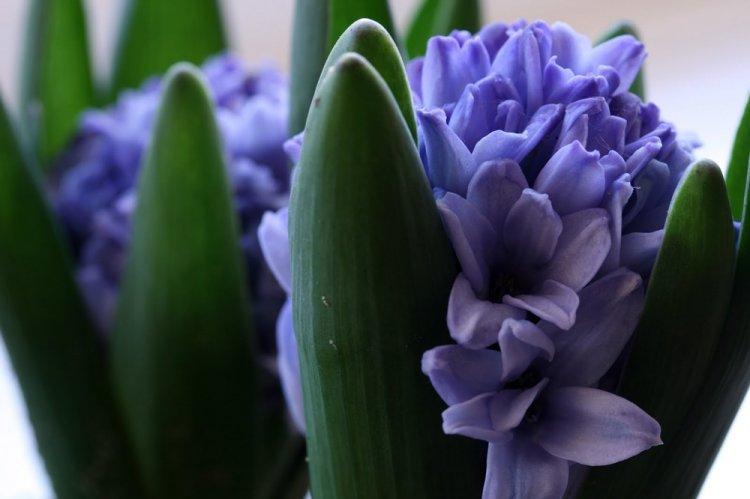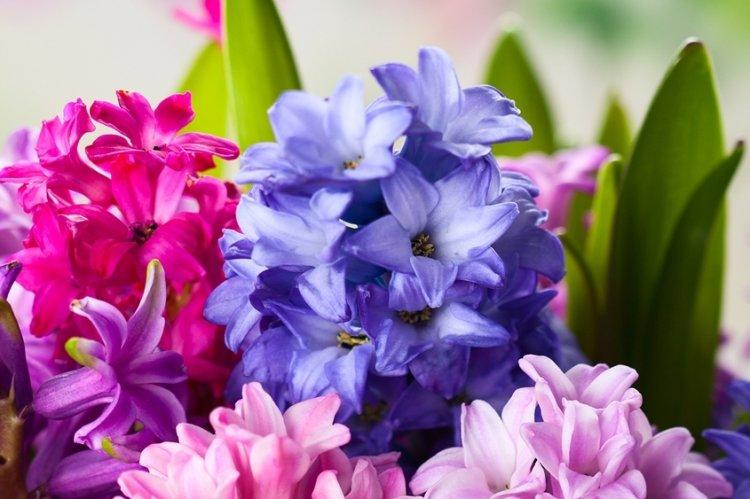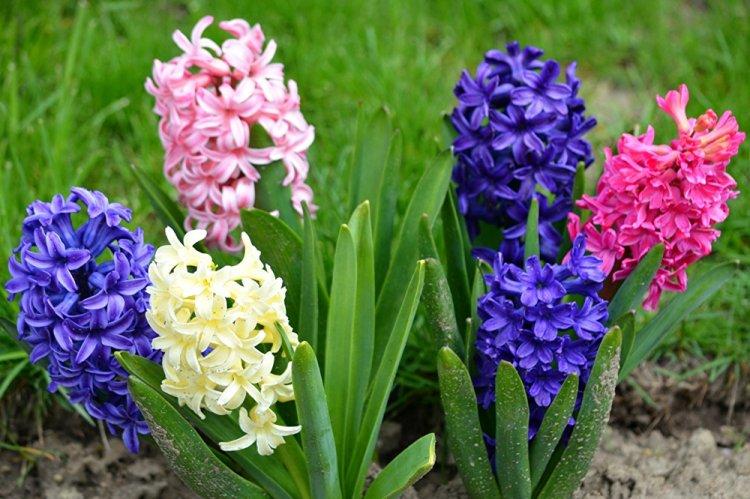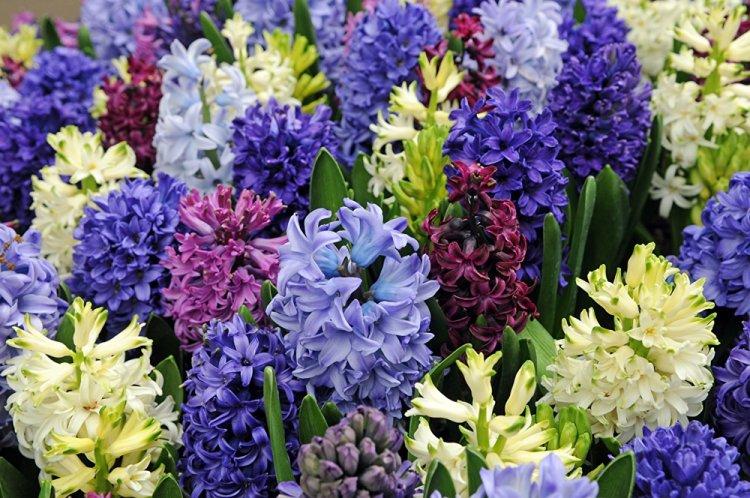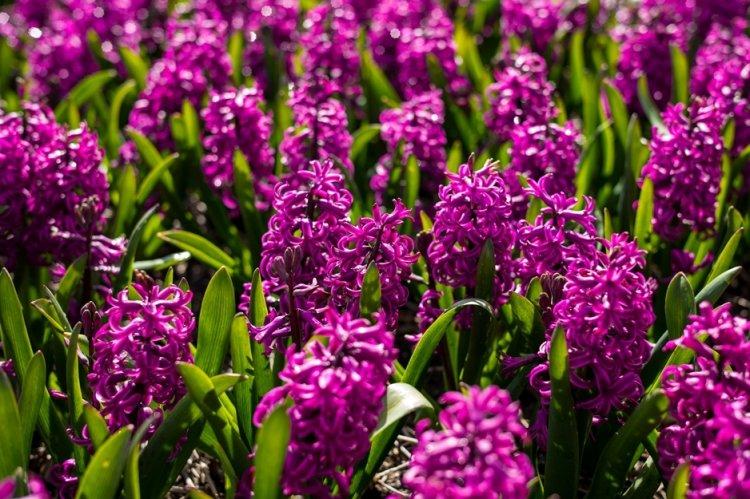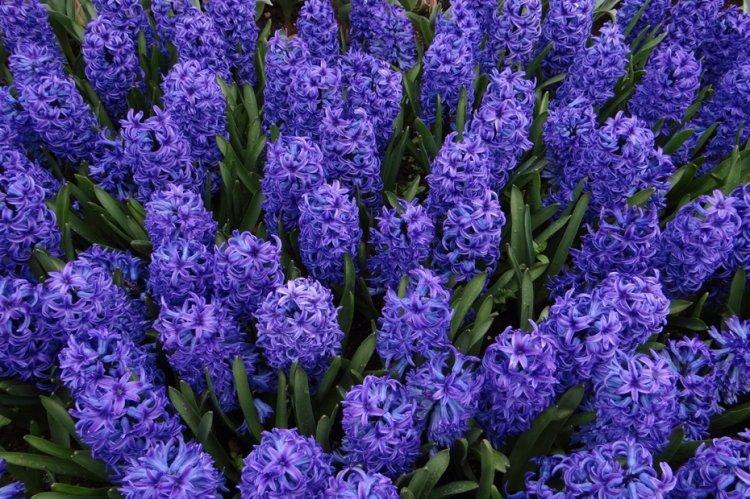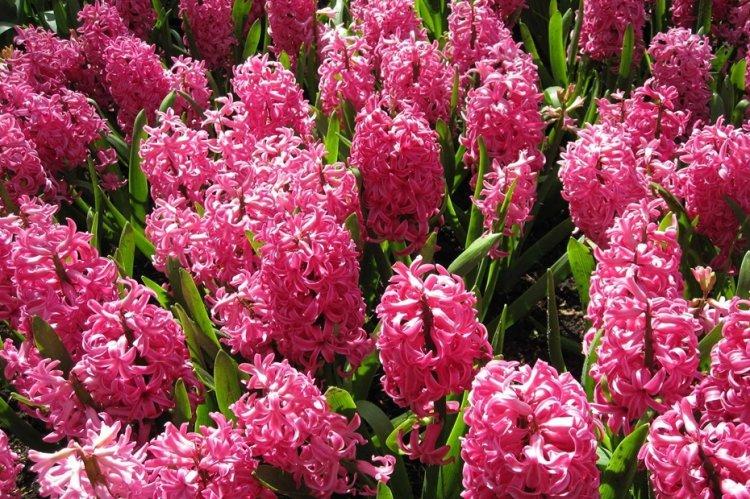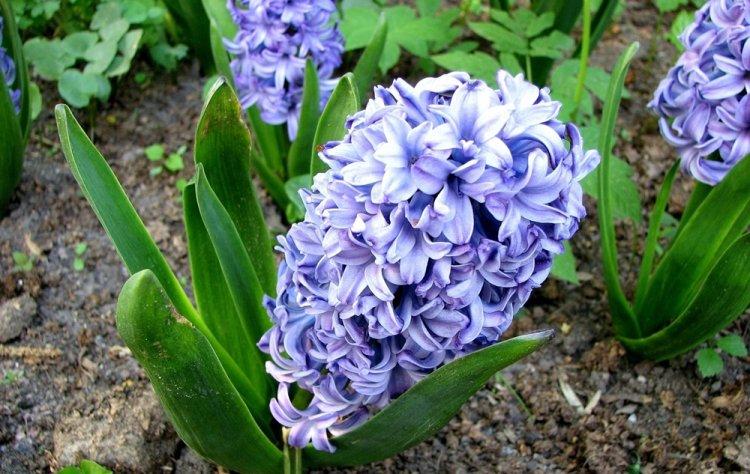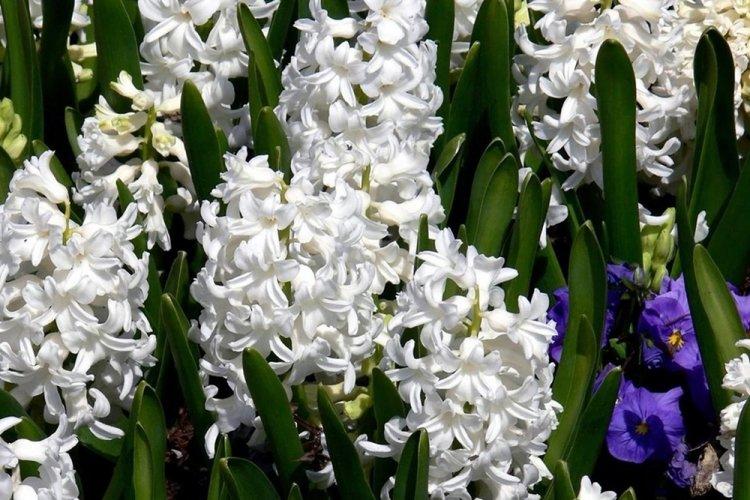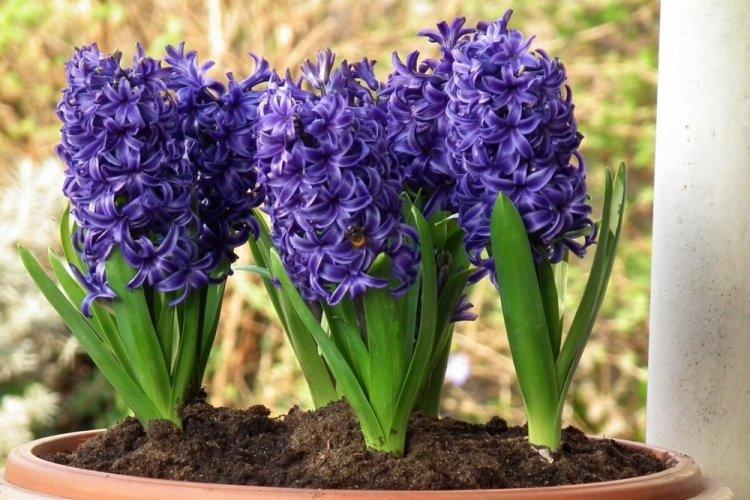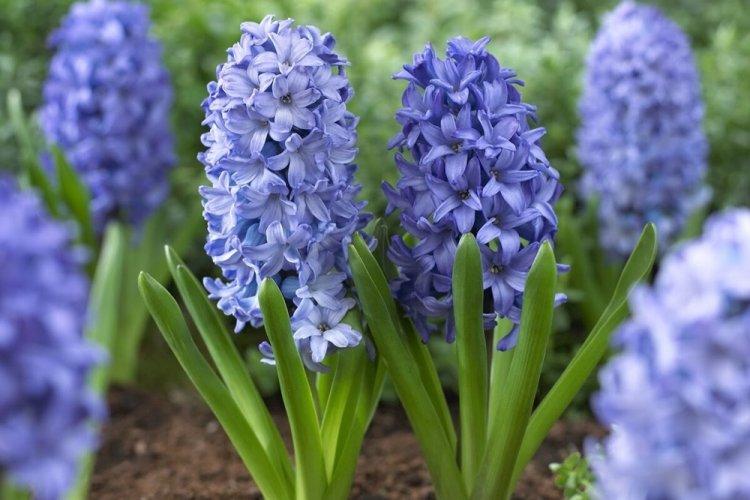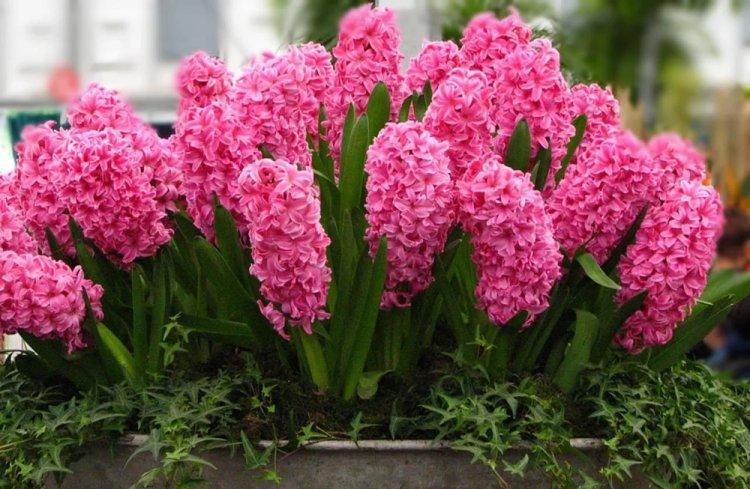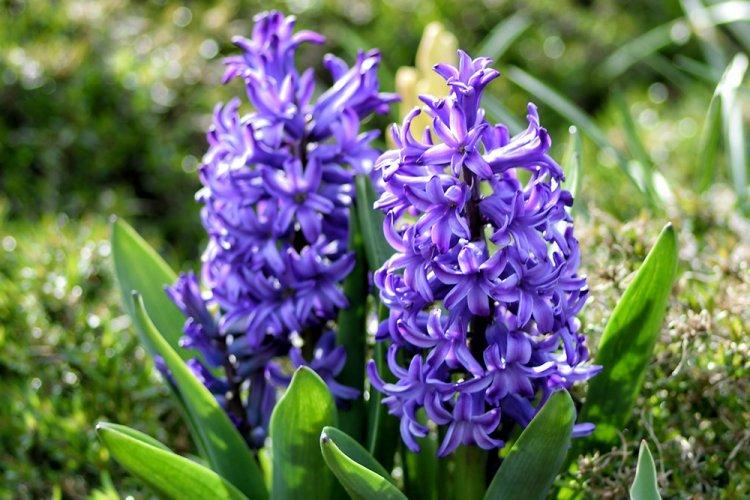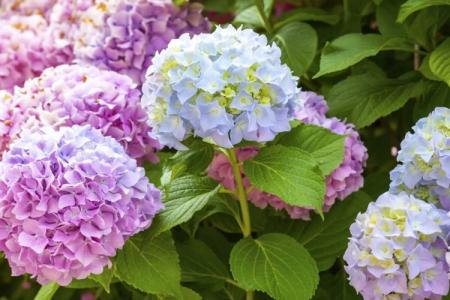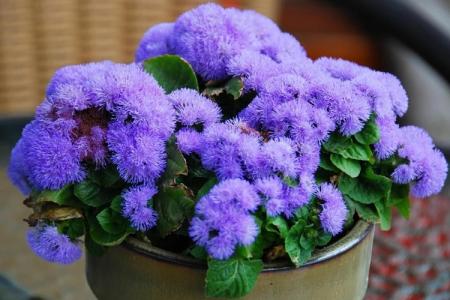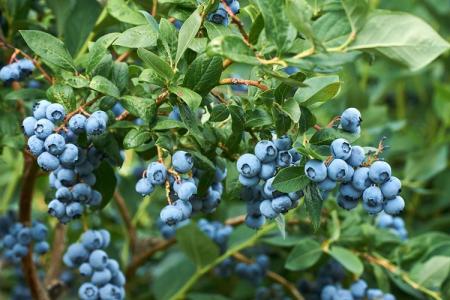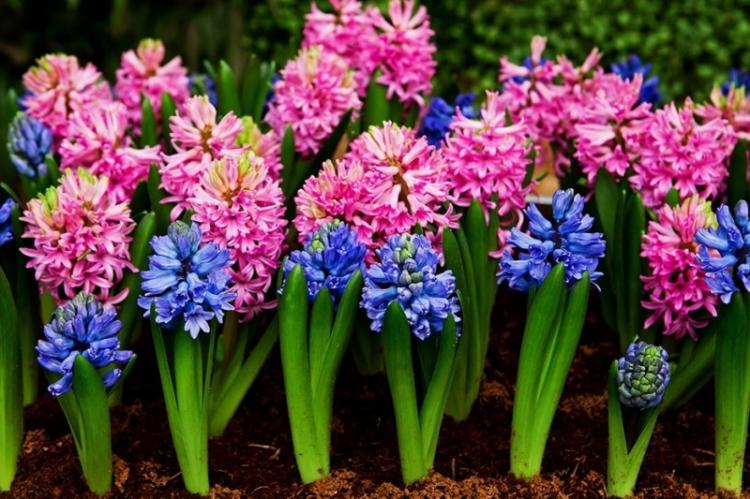
Hyacinth is the most unpretentious and versatile king of flower beds. It blooms with the first warming and pleases with colorful fragrant flowers. Hyacinths come in all colors of the rainbow: from white to dark purple, and even a novice gardener can handle it. Let's tell you more!
general information
Each hyacinth inflorescence resembles an independent lush bush or bouquet. Despite its exotic origin, it can be grown in almost any latitude. He came to us from Africa, Asia Minor and the Mediterranean, but easily adapts to the cold Russian regions.
Even if you are just starting to be interested in flowers, you must have come across hyacinths in the spring. They are often presented in flowerpots instead of bouquets for the spring holidays. Many people mistakenly believe that after the end of flowering, the plant dies, but in fact, with simple care, it will live for several years.
Hyacinths are herbaceous and rather short, with a rounded bulbous root. From the fleshy stem, dense voluminous leaves diverge, which cover the base of the shoot. Inflorescence brushes consist of small bells with 5 petals each. Moreover, they are not necessarily monochromatic - there are spectacular variegated varieties.
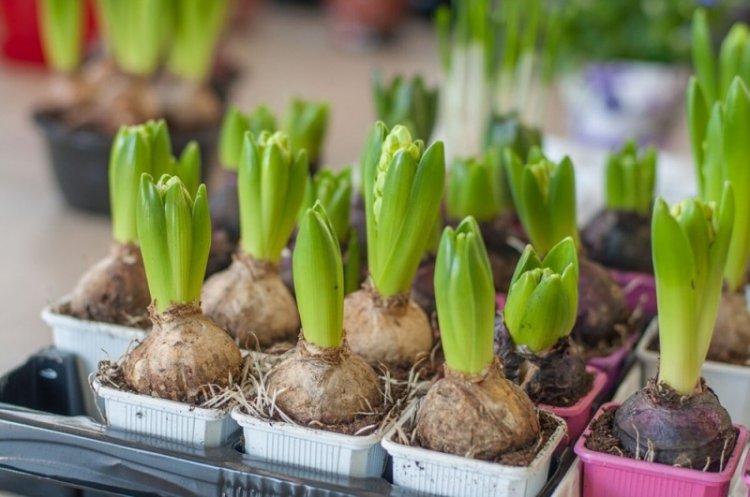
Types of hyacinths
Hyacinths are actively used by florists, decorators, landscape designers and gardeners around the world. It is not surprising that, in addition to wild varieties, dozens of decorative ones have already been bred. Now let's find out which ones are the most popular!
Mouse hyacinth
For a long time, mouse hyacinth was attributed to a completely different species - to liliaceae. It is found in steppes, meadows and on forest edges, it is distinguished by an unusual barrel-shaped form of flowers in voluminous brushes on a bare arrow. On the basis of wild mouse hyacinth, more than 50 decorative home varieties were bred.
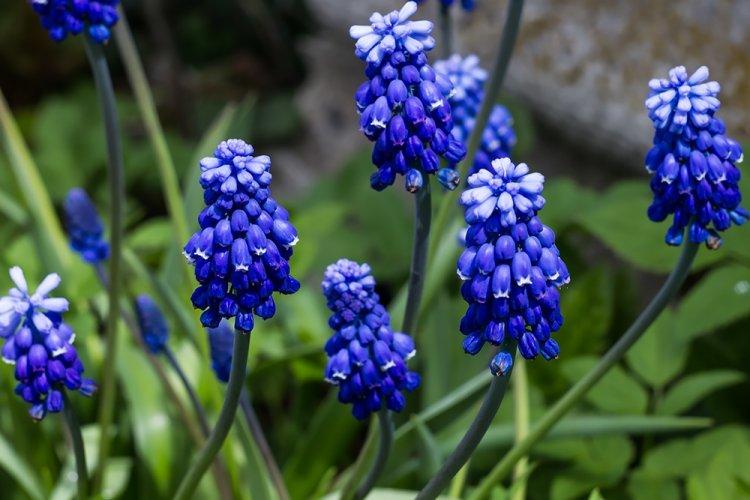
Dutch hyacinth
Rather, it is not even a variety, but a whole series of cultivated subspecies - only about 400 variations and colors. Flowers can be ordinary, multi-flowered or double, but they are always collected in voluminous loose inflorescences. The bulbs of such hyacinth are quite dangerous because they contain oxalic acid, which is toxic to humans. But colchicine from leaves and stems is widely used in medicine and cosmetology.
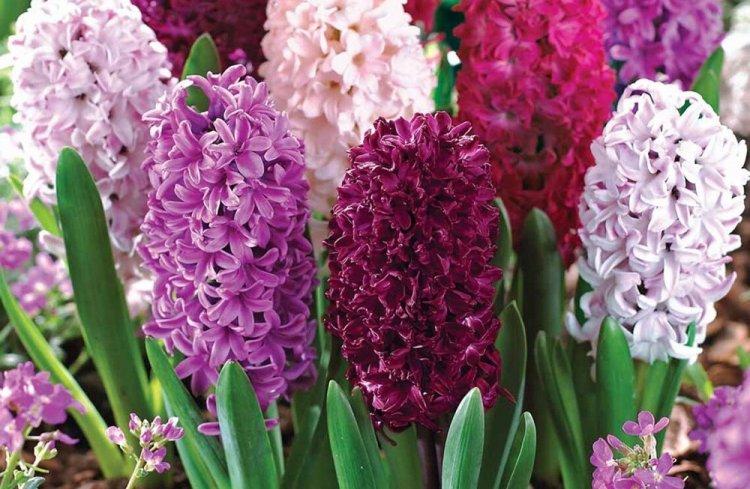
Whitish oriental hyacinth
This variety is also called Galtonia or Franco-Roman hyacinth. Its features are high growth and several peduncles at once on one bush. They are short and weak, but very delicate and graceful due to the hanging bell-shaped flowers. In southern countries, the whitish hyacinth bulb tolerates wintering without digging up.
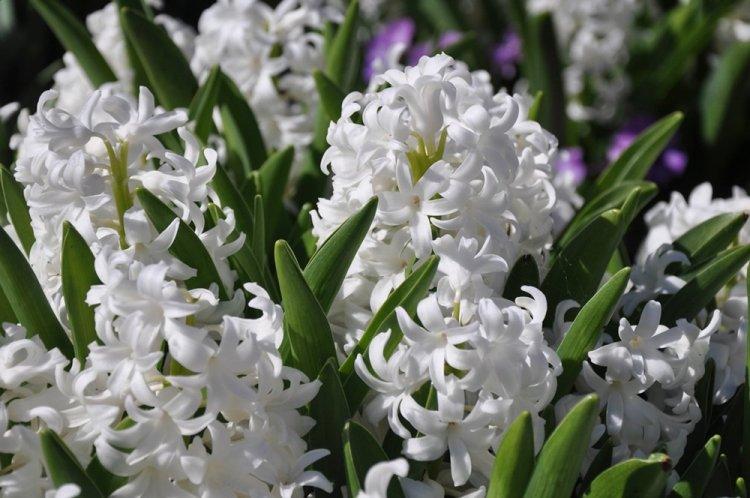
Transcaspian hyacinth
It is a rare wild variety that is difficult to find in nature, but is highly prized by breeders when crossing. It grows in the Kopetdag region in a mountainous area at an altitude of up to 2000 meters in the shelter of juniper trees. The tough, fleshy leaves are protected by rare inflorescence clusters of 4-10 blue bells.
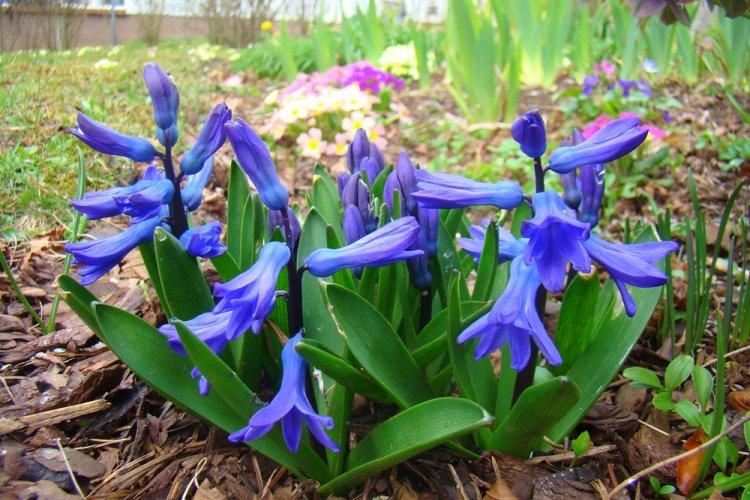
Hyacinth Litvinova
This wild variety gets its name from the Russian florist who first described it. It is undersized, with wide bluish leaves and 2-3 peduncles with cut, odorless curved petals. Hyacinth or hyacintella Litvinova grows naturally in Turkey, Libya, Syria, Iran and Lebanon. In some regions, it is listed in the Red Book.
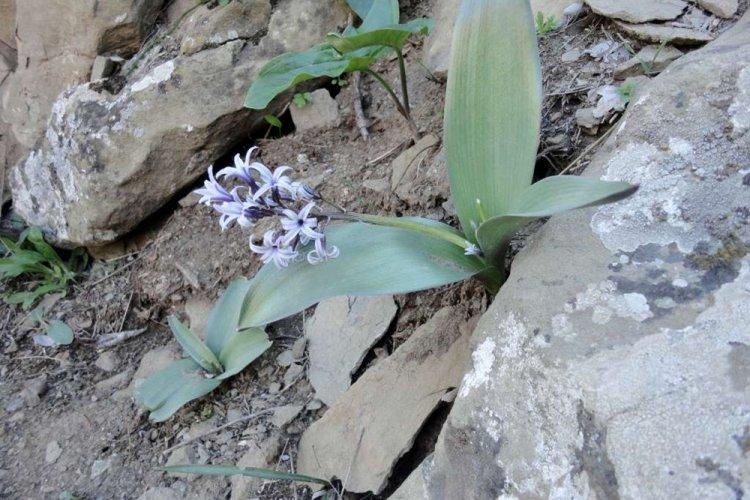
Water hyacinth
Water hyacinth is not suitable for a home - but it is a real curiosity of Brazilian sailors. And all because flowers with large elastic leaves grow rapidly and cover the rivers with an impenetrable blue-violet carpet. The plant is kept afloat due to the unusual structure of the cuttings with a porous thickening.
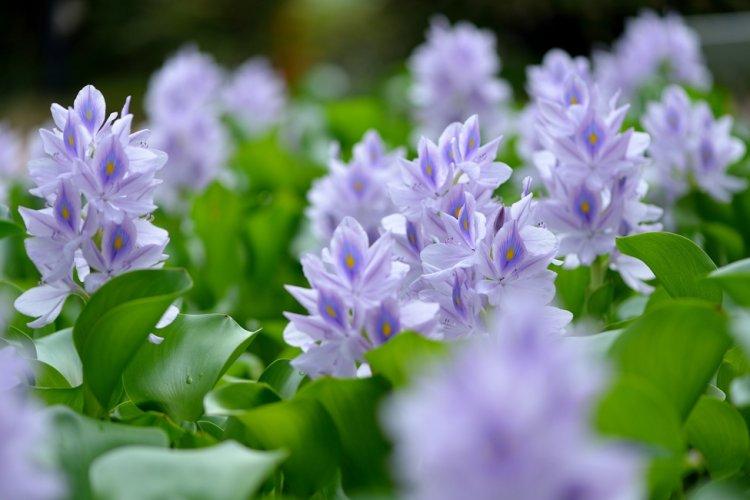
Hyacinth care
Hyacinths are so undemanding that they feel great literally everywhere: both in the yard and on the windowsill. Unless in the apartment you will have to recreate conditions similar to natural ones!
Temperature
Although hyacinth is very early, it does not tolerate severe cold weather, drafts and temperature changes. Its ideal mode is about +20 degrees, maximum - with short and insignificant spring cold snaps. In the summer, we recommend taking the pot on the open balcony - it is useful for him.
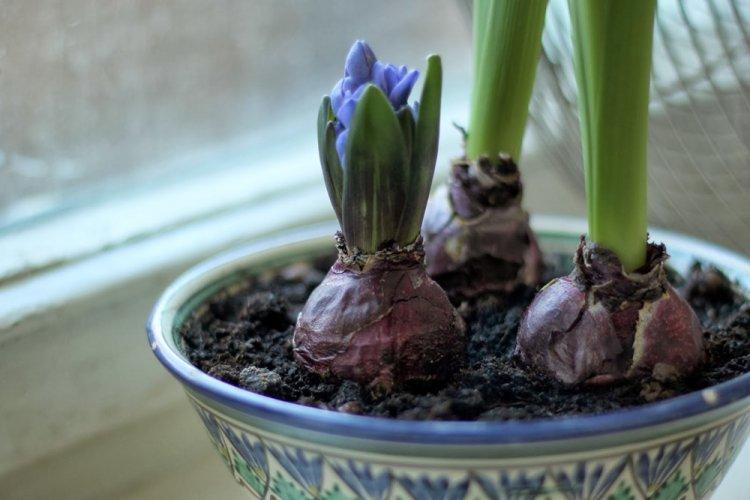
Lighting
Hyacinth really needs sun, and the more, the better. Choose a well-lit area or southern windows so that the flower can bask in the rays all day. Otherwise, you will have to purchase special phytolamps in advance. Flip your home pot from time to time to keep the plant from warping while reaching for the sun.
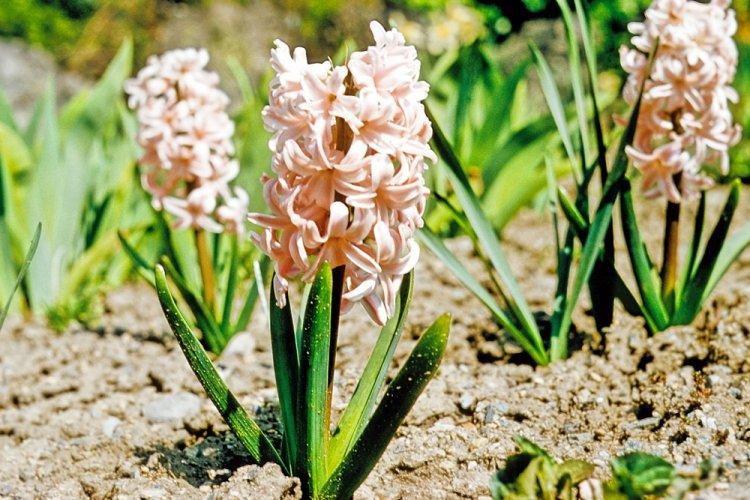
Watering
Hyacinth is very sensitive to excess moisture, so you will have to water it often, but very carefully. If water gets on the leaves or stem, the flower is likely to rot. Use submersible irrigation whenever possible and minimize the number of watering cans and hoses. It is impossible to spray hyacinth at all, regardless of the temperature around.
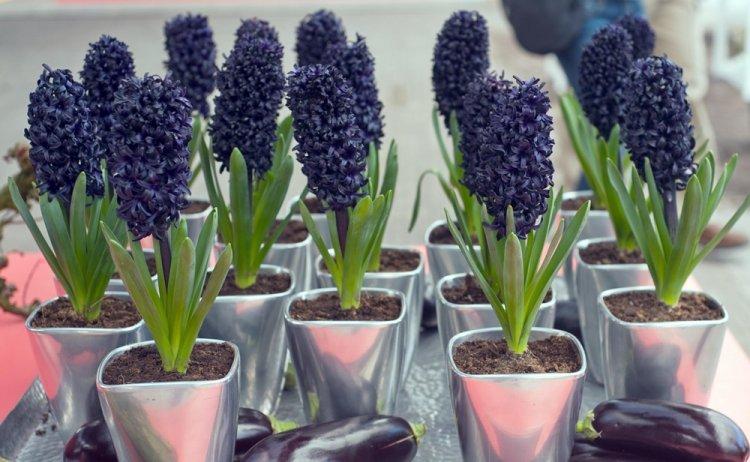
Fertilizers and feeding
Hyacinths love feeding and feeding with universal fertilizers. Especially home pots, which are constantly lacking useful components. Supplements can be both dry and liquid, but then the flower must first be watered well.
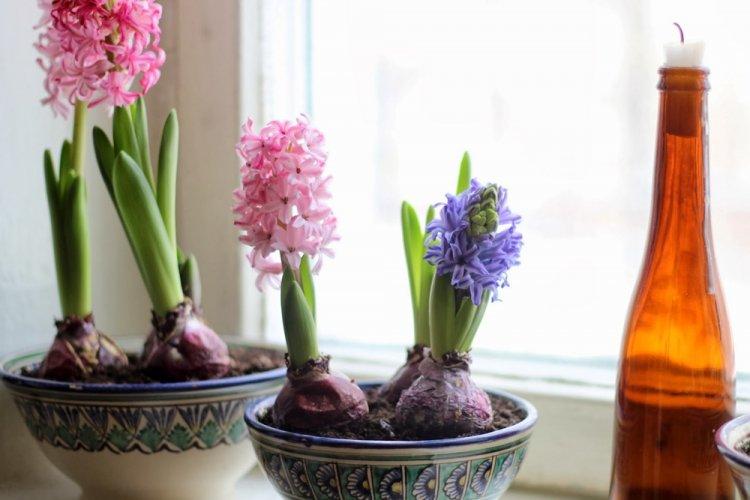
Choosing a bulb for planting
In order for hyacinth to grow strong and healthy, you need to choose the right bulbs for planting. Each of them should be dense, smooth and elastic, and the scales on it should be whole and neat. The average diameter is about 5 cm, but this is not the main selection criterion.
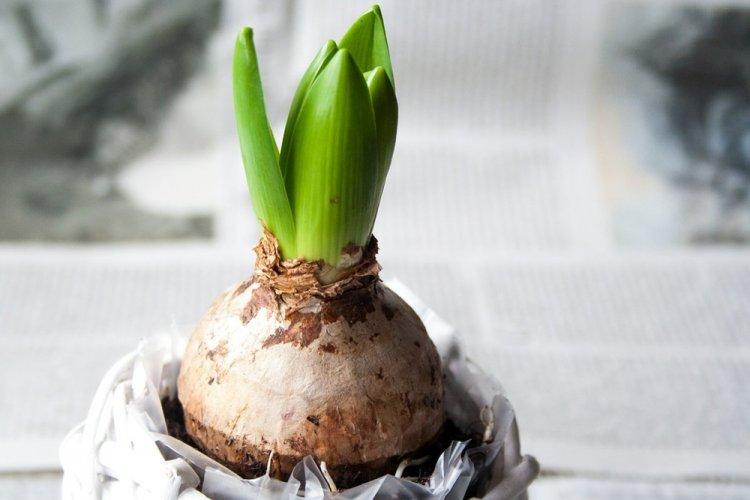
Transplant and reproduction
In nature, hyacinths are pollinated by insects, but at home you will have to reproduce yourself. Healthy scales or so-called "babies" - small bulbs are best suited for this. In one season, up to five such children can be collected from a flower, but for this, the main rhizome must be cut, regularly treated with fungicides and monitored by the temperature regime.
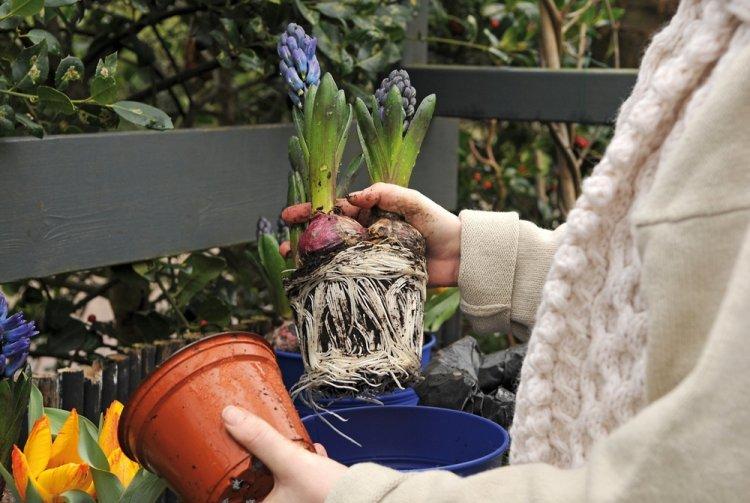
Pruning after flowering
When the hyacinth fades and withers in summer, cut off the flowered leaves and dig up the bulb. There is no need to leave them in the ground for the winter - the correct temperature regime is too important. Make sure that the onion is intact, treat it with an antiseptic and store until planting, lowering the temperature from 30 to 18 degrees.
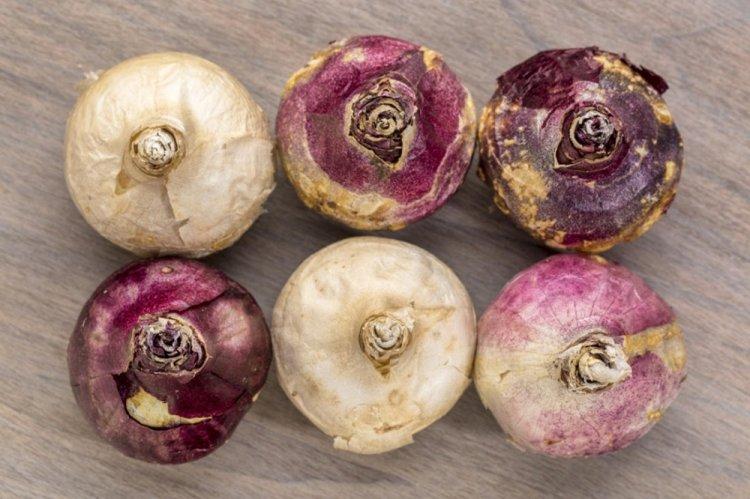
Pest and disease control
If the hyacinth does not bloom, most likely it does not have enough sun or the temperature regime is out of order. The flower does not like either extreme cold or extreme heat. If it rots or buds fall off, you have problems with watering and fertilizing. The main reason that the leaves turn yellow early is a lack of moisture and drafts, and the hyacinth withers due to a lack of sunshine.
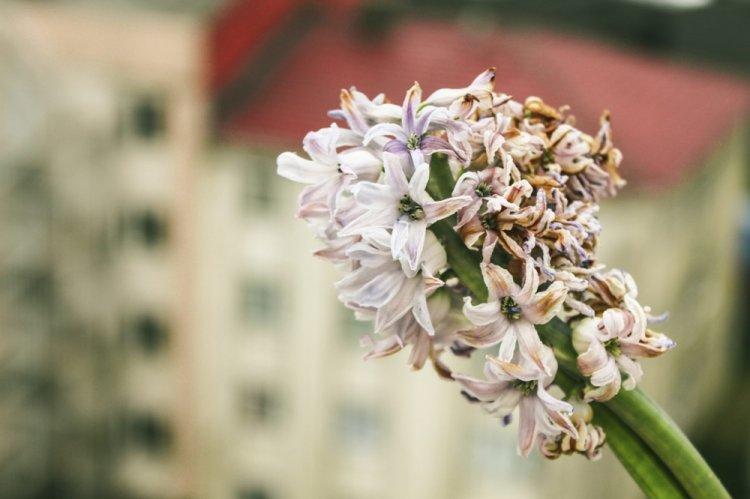
Hyacinth - photo
Hyacinth is not a hassle, but this is not the main reason for its popularity. First of all, it is a very bright, beautiful and showy plant. Make sure with your own eyes!
